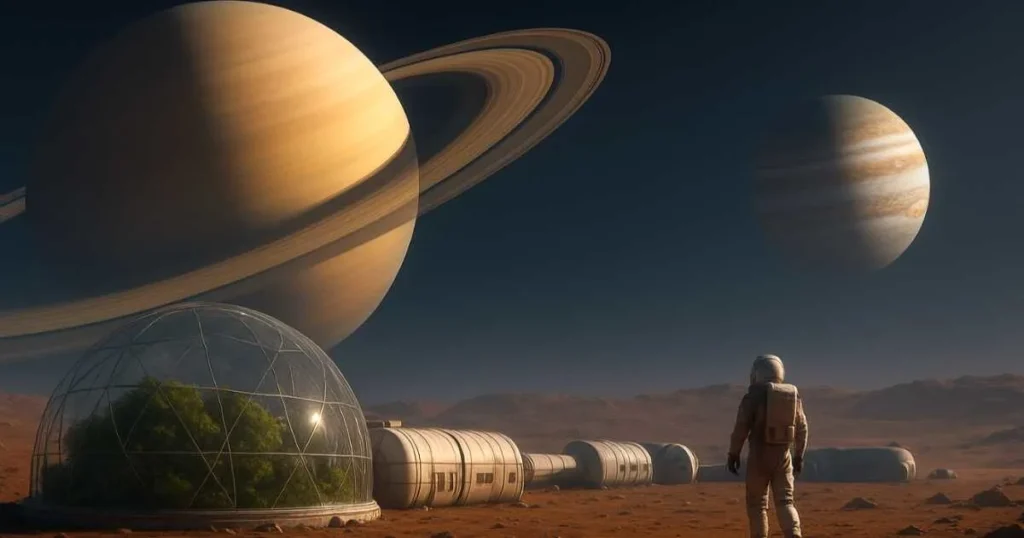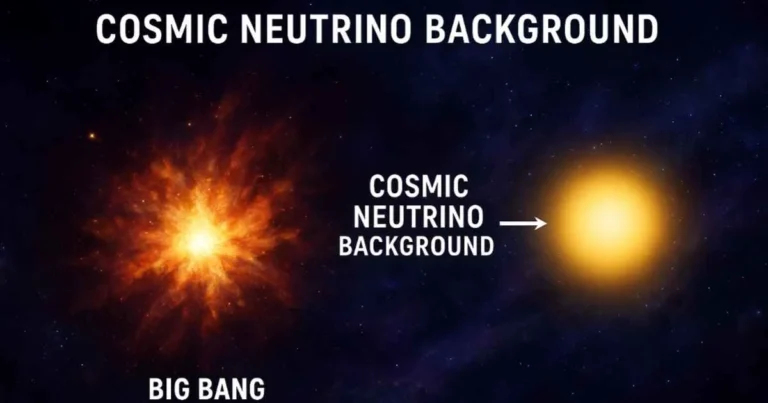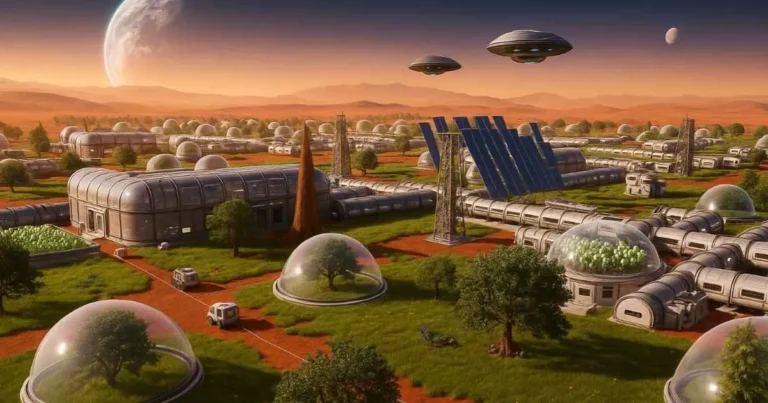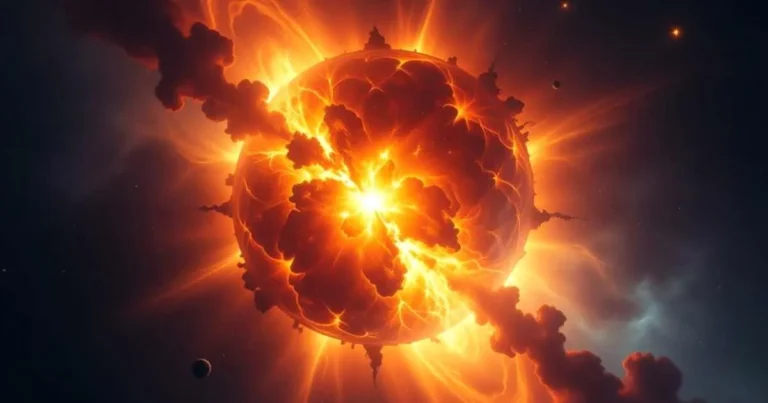Why Colonizing Moons Instead of Planets Might Save Humanity

Tags:
- Mars Colonization
For decades, the dream of leaving Earth has revolved around colonizing planets like Mars or even Venus. But what if the real key to humanity’s survival lies not on planets, but on their moons? Worlds like Titan and Europa offer resources, protective environments, and mysteries that may make them far more suitable for future colonies than the barren surfaces of Mars or Mercury. Exploring why colonizing moons instead of planets could be our smartest move not only reshapes our vision of space exploration but also opens the door to a future where humanity thrives on alien worlds orbiting giant planets.
Why Colonize Moons Instead of Planets?
The biggest problem is the availability of water. We’re not so certain that there are ice caps present in the poles of Mars, and in Venus and Mercury there’s no way water would exist in that extreme temperature but we’re so certain that many moons (Europa, Enceladus, Titan) have abundant surface or sub-surface ice which is the basic need for humans outside of Earth in order to survive. Water can also be used in extracting oxygen and as a rocket fuels.
Moons are relatively smaller in size than planets which means their gravitational force is less stronger than that of planets which would make launching of spacecraft easier and cheaper. Many moons orbit giant planets, offering protection from radiation through magnetic fields. Also planets like Mars (forget about Venus and Mercury because it’s impossible to survive there) are subjected to asteroid impact as it is located near asteroid belt which would mean that we would be watching huge fireworks nearly every month.
Even if we go there it’s nearly impossible to supply all sorts of needs from the Earth. If we do so then there won’t be reason of colonizing other moons unless we start extracting energy and resources present in that particular moons or planets. Therefore, stable surfaces, underground oceans which creates a huge potential for energy sources like tidal heating. And lastly, unlike harsh planetary atmospheres such as Venus’s or Mars’s thin air, moons may provide more manageable environments for building habitats, making them strong candidates for future human colonies.
Now let’s move on to some moons which would be our next home.
Titan – Saturn’s Earth-like Moon
One of the largest moon of our solar system and Saturn’s largest moon Titan can be our next home and the scientific studies prove it. But how? Titan has an atmosphere which is made up of Nitrogen as same as ours which would protect us against harmful radiation and there isn’t a single celestial body which offers this to humans.
It’s surface is rice in water ice, and It has lakes and seas of liquid methane and ethane and you may know that these are the same liquids which is used as fuels in our day to day life. Therefore, these hydrocarbons can serve as fuel, making Titan a natural refueling station of deep space missions.
Despite its cold temperatures, the abundance of chemical energy and raw materials gives humans the chance to build a sustainable colony far away from the Earth. Just wonder how would the sky on Titan would look like- Saturn and it’s ring. Pure aesthetic!
However, with protection, resources and energy, Titan offers an environment where life supporting system could thrive more easily than any other planets.
Europa – The Hidden Ocean World
What makes earth different from other planets, it’s the availability of water in its surface which is the biggest reason why there is life on Earth. But what if I will tell you that Europa, one of Jupiter’s moons, a strong candidate for colonization because of its vast subsurface ocean, the hidden beneath a thick crust of ice, and this ocean contains more water than Earth, Would you believe it? But yeah you heard that right Europa has more water than Earth would would provide an endless supply of water for drinking, farming, and producing rocket fuel.
This ice layer can also act as a natural shield against radiation, keeping habitats safe if and if they are built underground or beneath the surface. Europa’s ocean is heated by tidal forces from Jupiter’s gravity, which may also provide geothermal energy.
And if this moon is that sustainable then the question is– Is Europa already hosting alien life? Because Europa is one of the most scientifically valuable places to host alien life and what we need to do is just to explore this moon deeply. And if we do so then building colonies here would not only ensure survival but also bring humanity closer to answering one of our biggest questions: Are we alone in the universe?
Other Promising Moons Beyond Titan and Europa
- Enceladus: One of the moons of Saturn which is famous for its geyser-like plumes that spray water vapor and ice into space. Scientists believe that it likely has a liquid ocean beneath the ice, with conditions that could support microbial life. And if this moon has liquid beneath it’s ice then the easy access to water makes it valuable for human survival and fuel production.
- Ganymede: The Moon of Jupiter which also happens to be the largest moon in the Solar System, even bigger than Mercury. Scientific studies suggest that it ias its own magnetic field, which would offer some protection from radiation. What about water, then it is also believed to have deep underground oceans and plenty of water ice. Its bigger size even bigger than a planet and it’s resources make it a strong candidate for large human settlements.
- Callisto: One of the moon of Jupiter which is less geologically active than Europa or Ganymede, meaning it is more stable and safer to colonize. It is covered with ice and likely has a salty underground ocean. Its distance from Jupiter means less radiation exposure than Europa or Ganymede.
It could serve as a base camp for exploring deeper into the outer Solar System.
Could we be able to terraform Moon?
You read everything above that this moon has got this potential or that potential but the question is Could we able to terraform them? Then terraforming a moon is highly unlikely because most moons have very low gravity, which simply mean that they cannot hold a thick, stable atmosphere. Without an atmosphere, liquid water and breathable air would escape into space. And life won’t thrive there.
They also lack strong magnetic fields, so radiation from the Sun or their parent planet would strip away any artificially created atmosphere. Additionally, their extreme cold temperatures and tidal forces make maintaining Earth-like conditions nearly impossible. The only partial exceptions are Titan, which already has a dense nitrogen atmosphere, and Ganymede, which has a weak magnetic field, but even there full terraforming would be extremely difficult, what we can do is to use them to explore deeper into space and find more earth like planets. But living and thriving there is not a good idea.
Scientific and Ethical Importance of colonizing Moons
Colonizing moons holds both scientific and ethical importance. Let’s see scientific importance initially.
Moons like Titan or Europa offer a chance to explore oceans away from us(however we haven’t explored 90% of ocean waters on our earth yet) their unique atmospheres, and conditions that may host life. Establishing bases in those moons as we have in Antarctica, could expand human knowledge, provide resources, and serve as stepping stones for deeper space exploration.
Ethically, it raises questions of responsibility, a responsiblility that we have no any other options than Earth. Therefore, protecting potential native ecosystems, avoiding contamination, and ensuring space is used for peaceful, sustainable purposes.
Colonizing moons could unite humanity under a shared goal of survival and discovery, but it also challenges us to balance curiosity with care, ensuring exploration does not become exploitation of new worlds.
Current and Upcoming Missions to Jupiter’s and Saturn’s Moons
- Juno (NASA) – Launched by National Aeronautics and Space Administration(NASA) on 5th August 2011, currently in orbit since 2016, Juno continues to study Jupiter’s atmosphere, magnetic environment, and has been making occasional flybys of its inner moons like Io.
However, it will shut down its operations after 2026. - Europa Clipper (NASA) – Launched by NASA on 15th October, 2024 it is set to arrive around 2030, it will conduct ~50 close flybys of Europa to study its ice shell, subsurface ocean, chemistry, and assess its potential for habitability.
- JUICE (Jupiter Icy Moons Explorer) – Launched by European Space Agency in April 2023, it will arrive in 2031 and after complex lunar and Earth flybys, JUICE will survey Ganymede, Europa, and Callisto—ultimately entering orbit around Ganymede in 2034 for in-depth study of its magnetic field, internal ocean, and geology
- Io Volcano Observer (IVO) – Proposed (NASA) : It aims to be launched around 2029 to map Io’s volcanism and internal heat processes via a multi-flyby approach—shedding light on tidal heating that affects Io, Europa, and Ganymede
- Tianwen-4 (CNSA, China) – Planned to be launched in 2029, it would deliver an orbiter to Jupiter and possibly Callisto, along with a probe for a Uranus flyby. The mission may include detailed studies of the Galilean moons.
The future of human settlements on Moons
While all are doing this discussion, sometimes a person sitting in a dark room may wonder what a colony on Titan would really look like. Maybe it’s not the shining cities of sci-fi movies, but clusters of domes sitting under that hazy orange sky, people moving around in heavy suits while machines hum quietly in the cold. It sounds exciting using Titan’s methane lakes to fuel ships, building something that feels like a second home. But then again, the distance, the freezing temperatures, and the constant fight against radiation make us think- would anyone truly want to live there, or would it always feel like a survival camp?
And then he’ll shift his thoughts to Europa and this also feels different. It can only ne imagined like an outpost — not really a “home,” but a place explorers stop before pushing further. Drilling through its icy crust to study the hidden ocean sounds incredible, like touching a mystery no one has seen before. Still, the idea of surviving under Jupiter’s harsh radiation belt makes it seem more like a science station than a thriving colony.
And maybe that’s the point. Colonizing moons might not give us perfect homes, but they would teach us how to survive where nature doesn’t want us to. Each step — Titan, Europa, maybe others — could be a rehearsal for something bigger. Maybe we’ll never fill the stars with human cities, but maybe, just maybe, these moons will be the stepping stones that make the impossible seem a little closer.
Comments
Please log in to leave a comment.
Related Posts

Cosmic Neutrino Background: The Ghostly Relic of the Big Bang
The Cosmic Neutrino Background is the ghostly radiation from the Big Bang’s first second. Undetected yet essential, it holds secrets about neutrino mass, dark matter, and the universe’s origin story. Here’s why scientists are chasing this invisible relic.

Why Colonize Mars Instead of Other Planets?
Over the past few years, the concept of why colonize Mars and not other planets for human life has shifted from science fiction to a strong scientific and practical argument. Mars possesses a uniquely well-equipped environment to support life beyond Earth — from water ice reserves and habitable gravity to a day-night cycle that most […]

What Are Zombie Stars? A Deep Dive into the Universe’s Undead
Zombie stars are cosmic oddities—stellar remnants that survive their own supernova explosions. Instead of fading into oblivion, they continue to burn faintly, offering astronomers rare insights into the life, death, and rebirth of stars across the universe.